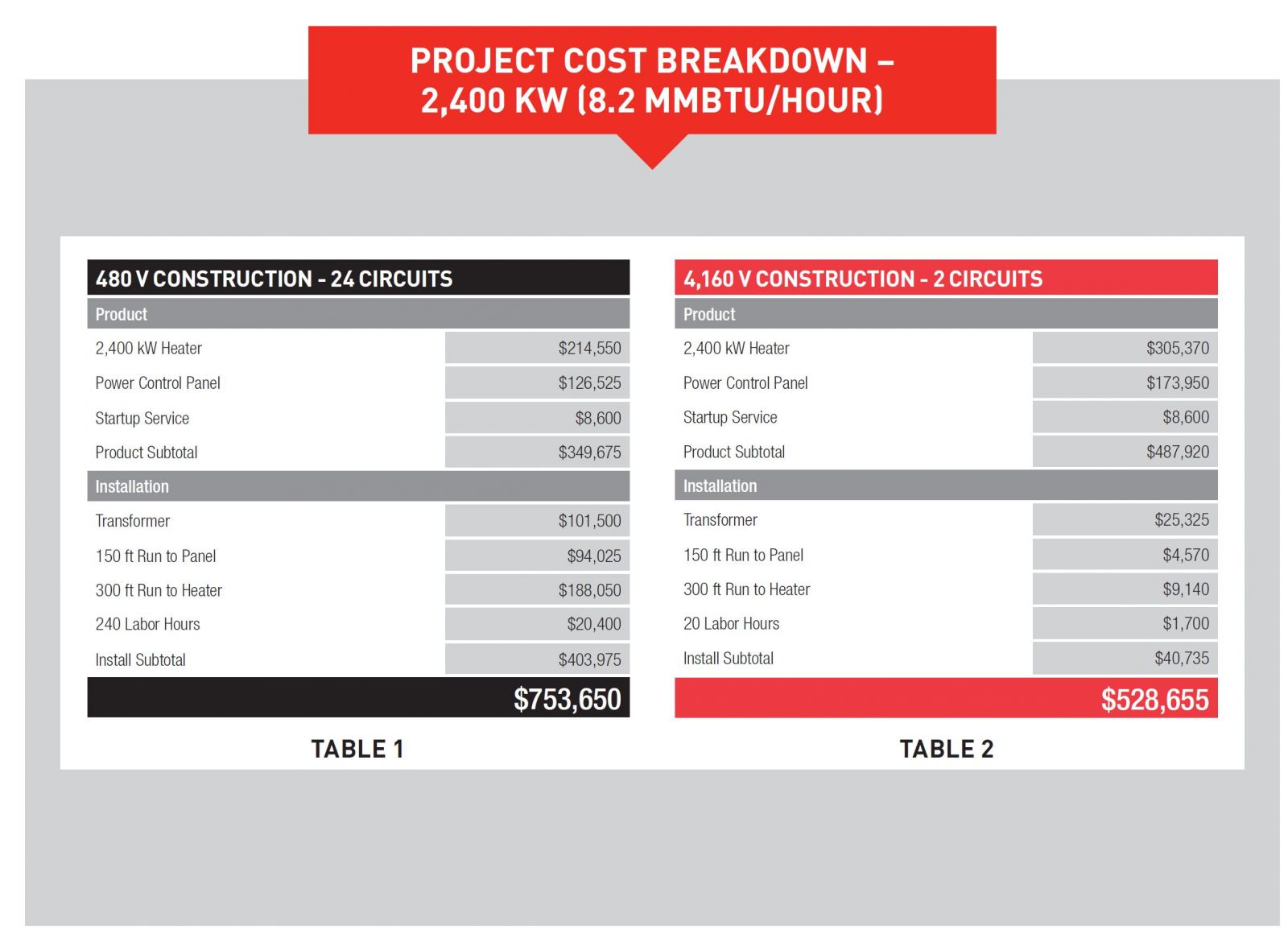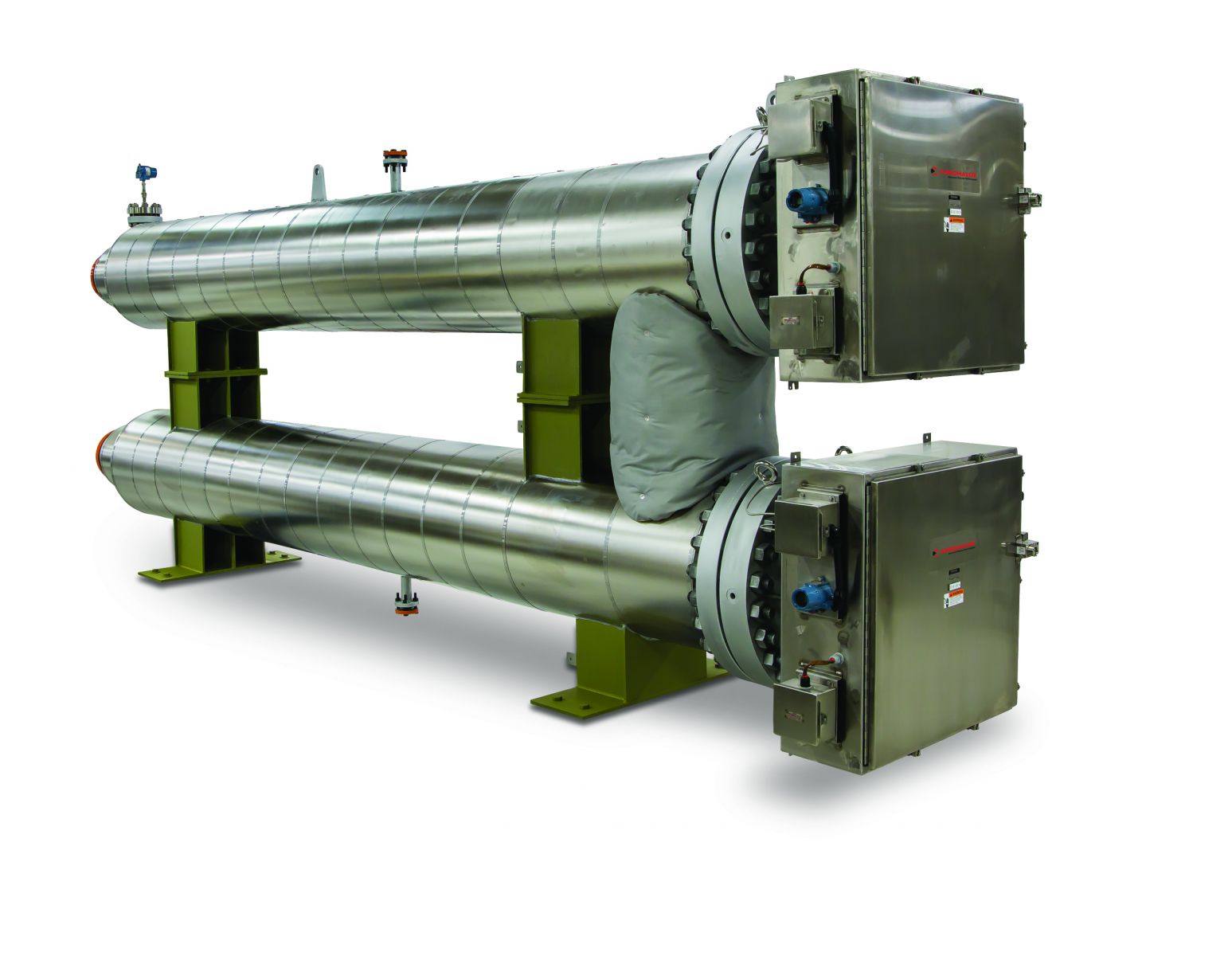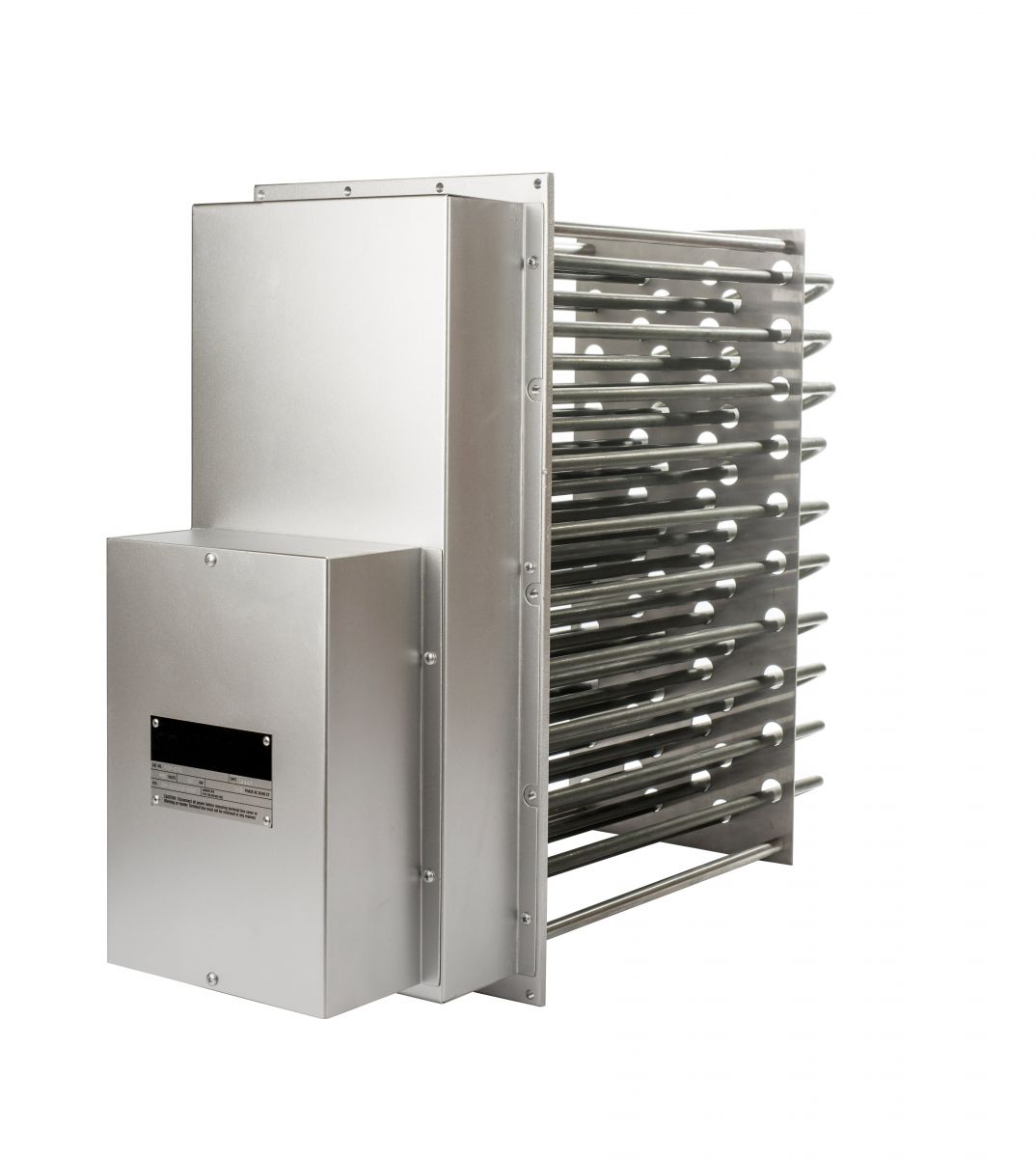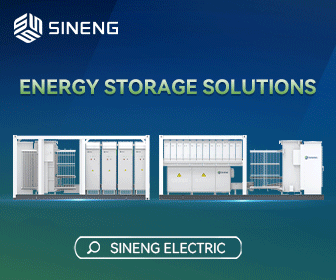Utilizing Electric Resistance Heat for Thermal Energy Storage Systems
With the global movement towards a decarbonized energy grid, sustainable energy technologies are becoming more and more prevalent. As advantageous as sustainable energy is, however, it comes with one significant downfall; it is heavily reliant on environmental conditions. As much as companies are investing in sustainable energy solutions, being able to store the captured energy for later use is critical towards long term success. Energy storage technologies are on a similar development trajectory to improve the viability of sustainable energy solutions.

Long term energy storage technologies come in many forms, including battery storage, compressed air storage, pumped storage, thermal energy storage, and more. Each concept breaks down into even more specific technologies, all of which aim to achieve a high level of energy efficiency, long storage duration, and low overall cost. For these primary metrics, one technology that has many advantages is thermal energy storage; in particular, heat storage. As discussed, thermal energy storage is not a one size fits all solution. Under the umbrella term of thermal energy storage, there are many types of media used to store the heat energy, from molten salts and metals to dense media like rocks, sand, and bricks. Regardless of the heated media, all forms of thermal energy storage systems require a heat input. Electric resistance heating is a technology often looked to as a practical way to convert renewable energy into sensible heat, which is then stored in the various mediums.
Electric resistance heating has been available on the market for over one hundred years. While the core technology still adheres to the same principles, recent developments in the capabilities of electric resistance heating have increased its popularity for use in sustainable energy and storage systems. One such advancement was the development of medium voltage electric resistance heating. Until a decade ago, all electric resistance heaters on the market were rated for low voltage (1000V and less), but advances in coil and dielectric designs has allowed for the new age of electric resistance heating that expanded the technology into medium voltage; specifically, ratings from 1000V up to 7.2kV. Operating at higher voltages significantly reduces the amp draw on the electrical system, reducing the overall infrastructure needed to support the electric heating system. When factoring in heat dissipation from the power switching components and I2R losses through the power wiring, electric resistance heaters already boast a high level of efficiency (higher than 95 percent). With the significant reduction in amp draw, the system now has fewer power switching components and fewer wires, increasing overall efficiency upwards of 99 percent. System components and labor and maintenance costs are equally reduced to provide a more advantageous total cost of ownership compared to conventional systems.
 Given how electric heaters play a part in the design of future energy storage systems, we must acknowledge their versatility. One notable asset is the obvious ability to run on electrical power. Whether this is off peak grid energy or direct from renewable energy sources, electric resistance heaters can provide a zero-emission solution powered by low-cost renewable energy sources that eliminates both Scope 1 and Scope 2 emissions. Their versatility provides another advantage compared to the rigidity of the other various thermal energy storage technologies; electric resistance heaters can be integrated into a variety of product offerings such as duct style heaters, circulation heaters, immersed or embedded heaters, as well as electric heat tracing. This means that energy derived from wind, solar, hydro, or any other renewable source can be distributed through electric heat where it is needed most. The use of molten salts and metals - where high temperatures and harsh corrosive materials may be problematic for many technologies on the market - gives electric resistance heaters another advantage: The internal coil design and dielectric barrier must be encapsulated by a metal sheath that can be comprised of high temperature and corrosion resistant alloys. In the case of thermal energy storage systems, process temperatures can easily exceed 1000°F, where utilization of hybrid low and medium voltage systems can be combined to limit overall infrastructure while still providing a robust design that will last decades under the harsh environment.
Given how electric heaters play a part in the design of future energy storage systems, we must acknowledge their versatility. One notable asset is the obvious ability to run on electrical power. Whether this is off peak grid energy or direct from renewable energy sources, electric resistance heaters can provide a zero-emission solution powered by low-cost renewable energy sources that eliminates both Scope 1 and Scope 2 emissions. Their versatility provides another advantage compared to the rigidity of the other various thermal energy storage technologies; electric resistance heaters can be integrated into a variety of product offerings such as duct style heaters, circulation heaters, immersed or embedded heaters, as well as electric heat tracing. This means that energy derived from wind, solar, hydro, or any other renewable source can be distributed through electric heat where it is needed most. The use of molten salts and metals - where high temperatures and harsh corrosive materials may be problematic for many technologies on the market - gives electric resistance heaters another advantage: The internal coil design and dielectric barrier must be encapsulated by a metal sheath that can be comprised of high temperature and corrosion resistant alloys. In the case of thermal energy storage systems, process temperatures can easily exceed 1000°F, where utilization of hybrid low and medium voltage systems can be combined to limit overall infrastructure while still providing a robust design that will last decades under the harsh environment.
 Also worth considering is how electric heaters are controlled. In most cases, a silicone-controlled rectifier, or SCR, is used. These high precision electronic switching devices are capable of firing an electric heater on and off many times per second. SCRs (thyristors) can uphold the same 95-99 percent efficiency level across all operating cases with 0-100 percent turndown, so these systems only use the energy they need to meet the process demand, and not necessarily the max load the electric heater is capable of handling. From high precision power control to near ideal energy conversion, electric resistance heaters boast many advantages to mitigating losses while simultaneously resisting the extreme environments they are subject to.
Also worth considering is how electric heaters are controlled. In most cases, a silicone-controlled rectifier, or SCR, is used. These high precision electronic switching devices are capable of firing an electric heater on and off many times per second. SCRs (thyristors) can uphold the same 95-99 percent efficiency level across all operating cases with 0-100 percent turndown, so these systems only use the energy they need to meet the process demand, and not necessarily the max load the electric heater is capable of handling. From high precision power control to near ideal energy conversion, electric resistance heaters boast many advantages to mitigating losses while simultaneously resisting the extreme environments they are subject to.
As companies around the globe continue to press the boundaries of what sustainable energy and storage technologies are capable of, the value of electric resistance heating cannot be ignored. The technology has proven its longevity as it has become a pivotal part of industrial heating processes for over 100 years. With further advances in design capabilities, electric resistance heating has more to offer to next generation energy storage systems to bring high efficiency, zero emission heat to where it’s needed most.
James Lewis is Business Development Manager of Sustainable Energy at Chromalox, a Spirax-Sarco Engineering plc company, a provider of thermal solutions for sustainable and mission critical applications globally. In 2017, James became the Global Product Manager of Components Technologies, one of Chromalox’s three primary Technology platforms, where he specialized in the integration of advanced temperature and power controls with the core heating solutions. As Business Development Manager, James shares his breadth of knowledge on industrial electric heaters and controls with the industry.
Chromalox | www.chromalox.com
Author: James Lewis
Volume: 2022 May/June









